KNOWLEDGE
How Do You Design Packaging for a New Product?
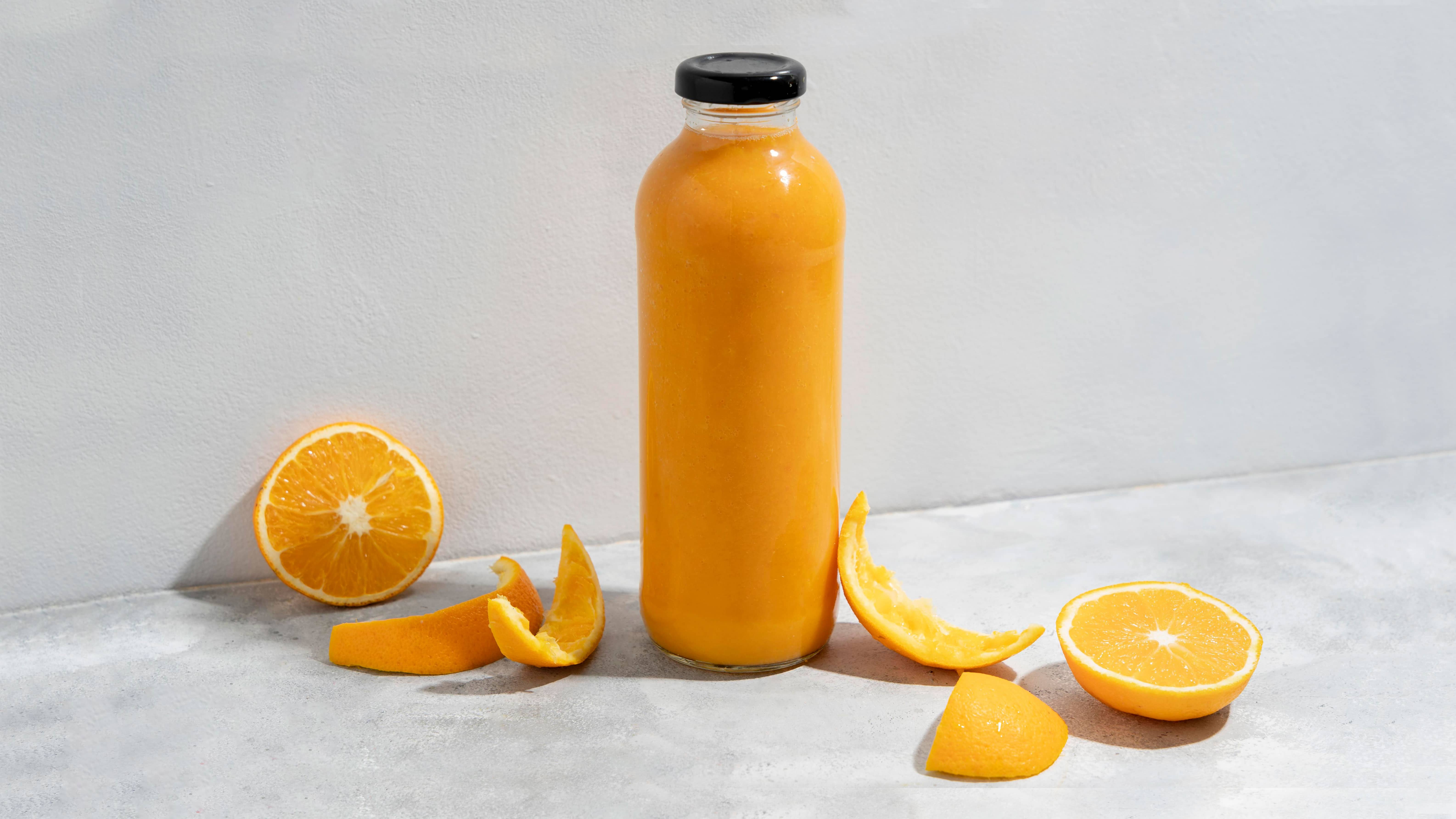
Good product packaging design is crucial for the success of any product in the market. Packaging design serves as a powerful tool for communicating a product’s features, benefits, and overall value proposition to consumers. Well-designed packaging not only attracts the attention of potential customers but also conveys a brand’s personality and values. It can create a memorable experience for customers and promote brand loyalty.
Good packaging design can also differentiate a product from its competitors and increase its perceived value. It can enhance the usability of the product by providing important information, such as usage instructions and nutritional facts. Investing in good product packaging design can have a significant impact on a product’s sales, brand recognition, and customer satisfaction.
Designing packaging for a new product requires a strategic approach to ensure that the packaging design aligns with the product’s target audience, brand identity, and the desired message you want to convey. Here we’ll discuss what steps to take when deciding on your brand strategy for packaging design.

1. Define Your New Product
What is the purpose of the product? What need is it fulfilling in the market? Defining your product and the space it will be serving is the starting point of designing your packaging solution. Understanding your product at a formulation level is crucial since it will determine the type of material options you can use for packaging. The more unstable the ingredients, the more important it is to be aware of their properties.
Ultimately the product’s purpose will drive it through packaging design as you answer questions from your brand’s perspective and your target customer’s expectations.
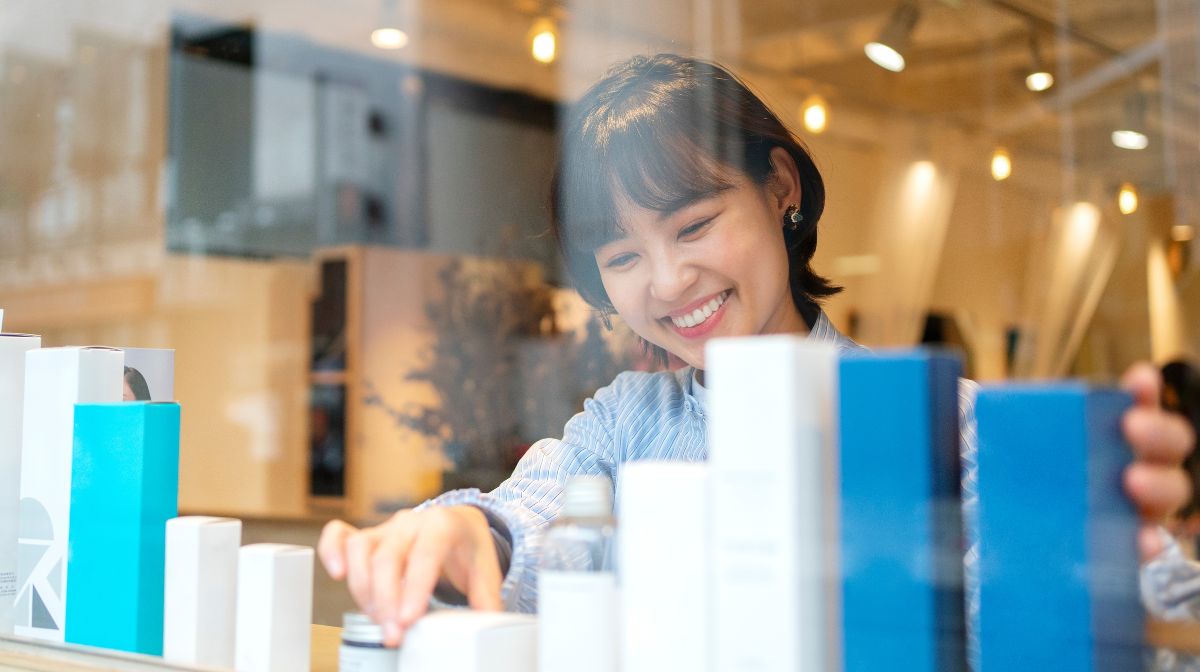
2. Know Your Customers
Knowing your customers is essential when designing packaging for a product because it can impact their purchasing decisions. Customers are attracted to packaging that aligns with their values and preferences, and understanding this can help you design packaging that appeals to them. For instance, if you are targeting eco-conscious consumers, you might opt for eco-friendly packaging that uses sustainable materials. On the other hand, if your target audience values convenience, you might choose packaging that is easy to use and store. By considering your customers’ needs and preferences, you can create packaging that enhances their overall experience with your product.
Understanding your customers can help you design packaging that stands out from the competition. By analyzing customer behavior, you can gain insight into what they find appealing and use that knowledge to differentiate your product from similar ones in the market. For example, if your target audience is attracted to bold and colorful designs, you might opt for packaging with eye-catching graphic design that differentiates your product on the shelf. By creating packaging that resonates with your customers, you increase the chances of your product being noticed and purchased, leading to increased sales and brand recognition.
Developing an understanding of your customers will help build better relationships with them. When you proactively listen to customer feedback and respond appropriately, you can establish a foundation of trust and loyalty. When customers feel that their opinions and perspectives are valued, they are more inclined to become repeat customers and recommend your products to their social circles, thereby generating positive word-of-mouth marketing and helping to expand your customer base organically. By taking the time to know your customers, you can create a product that meets their needs and builds a lasting connection with them.

3. Determine a Packaging Strategy
Determining a packaging strategy is vital because it helps to align packaging design with your business goals. A packaging strategy should define the goals, objectives, and tactics that your business plans to use to create a packaging design that supports your brand and product. This includes understanding the target audience, budget, and distribution channels. By establishing a clear packaging strategy, your business can ensure that its packaging design reflects your brand identity and product positioning and delivers a consistent message to its customers.
A packaging strategy can also help to optimize your resources and streamline the packaging design process. Identify the necessary resources and personnel required to design, create and implement the packaging design, and establish timelines and budgets. By having a packaging strategy in place, you can ensure that you allocate your resources and budget appropriately and within a designated timeframe.
A packaging strategy can also help your business to remain competitive in the marketplace. By understanding the market trends, competitors’ packaging designs, and consumer preferences, you can design packaging that differentiates your brand from its competitors. A packaging strategy will help you identify unique selling points and key benefits, and emphasize them in your packaging design. This can lead to increased sales, brand recognition, and customer loyalty, ultimately resulting in improved profitability and growth for your business.
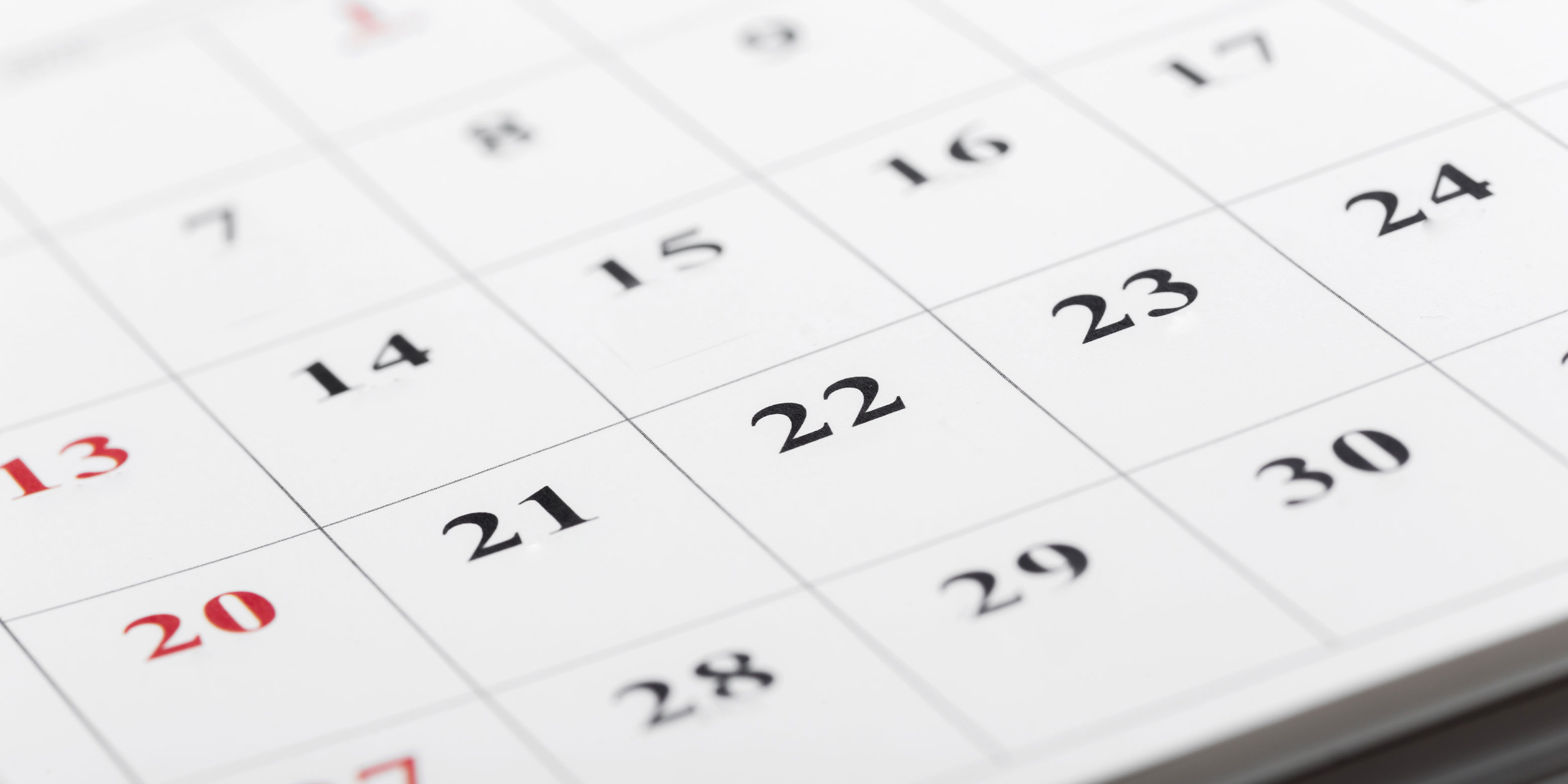
4. Create Internal Deadlines
Creating internal deadlines is an effective way to ensure that tasks and projects are completed on time and to a high standard. Internal deadlines are set by a team or an individual within a business, and they help to keep everyone on track and focused on the tasks at hand.
Deadlines are vital for making sure the product will be ready in time for launch. Internal deadlines also allow for sufficient time to test the packaging and make any necessary modifications before the final product goes to market.
Without internal deadlines, the project may become delayed or rushed, leading to mistakes and subpar packaging. In addition, setting internal deadlines helps to create accountability among team members, fostering a culture of productivity and responsibility. Overall, internal deadlines are an essential tool for businesses to ensure the timely and successful completion of packaging design projects.
5. Choose the Right Type of Packaging
Packaging serves many purposes beyond just holding the product. Choosing the right kind of packaging for a product is necessary to ensure that the product is protected during transportation and storage, meets customer expectations, and aligns with your brand’s image and values.
You’ll want to make sure that the product will be compatible with the material of the container, whether it be plastic, glass, metal, or another material. The size and shape of the container should be suited for the intended use of the product and the target market.
The right type of packaging can enhance the product’s visual appeal and create a memorable brand experience for the consumer. However, the wrong type of packaging can lead to customer dissatisfaction, decreased sales, and even harm to the product or the environment. Therefore, it is important to consider factors such as the product’s size, weight, fragility, and shelf life, as well as the target market’s preferences and environmental impact when choosing the type of packaging. Selecting the right type of packaging is imperative to the success of a new product and should not be taken lightly.
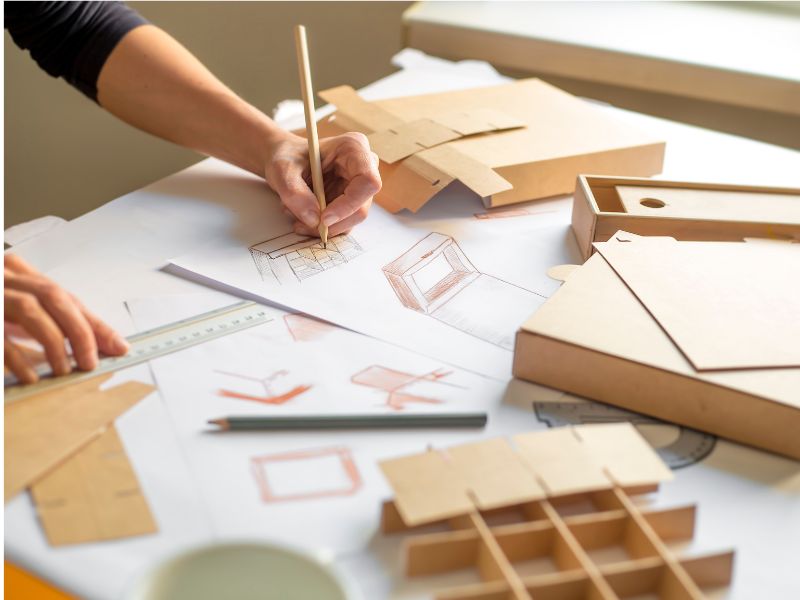
6. Create a Packaging Design Concept
Creating a design concept for a new product requires careful packaging consideration of several factors. The first step is to identify the product’s key features, benefits, and target market. This information will inform the design direction and help create a unique selling proposition for the packaging.
Next, brainstorm ideas and sketch out rough concepts that align with the brand’s values, aesthetics, and messaging. Once a few viable concepts have been identified, create mockups to visualize how the design will look in the real world. Refine the design based on feedback and testing, and ensure that it meets all necessary requirements such as product protection, storage, and transportation.
Consider sustainability and environmental impact when selecting materials and printing methods for the packaging design. By following these steps, your business can create a packaging design concept that is visually appealing, effective, and sustainable for its new product.
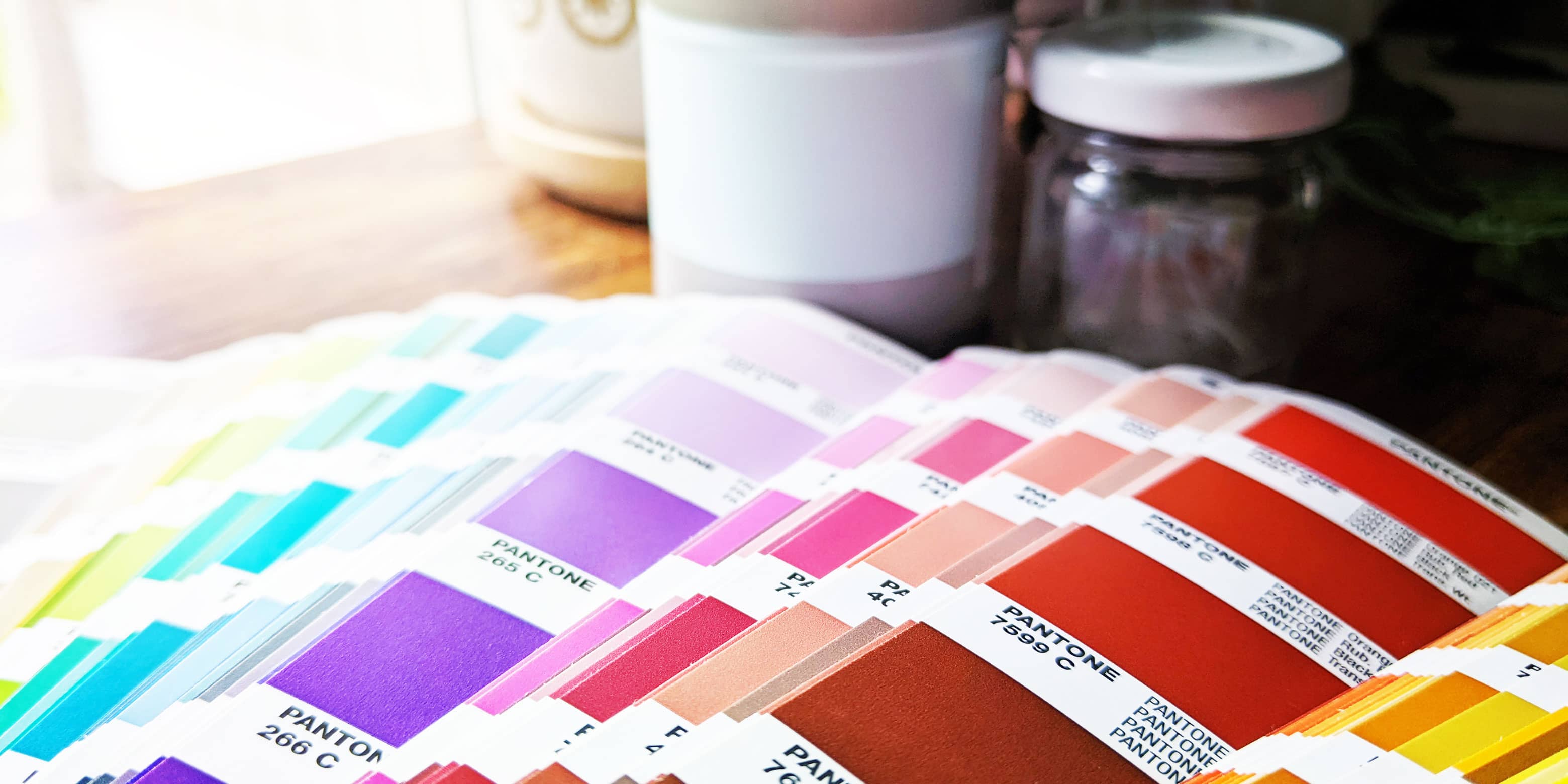
7. Design Your Artwork
Designing artwork for new product packaging can be a fun and creative process that can make your product stand out on the shelf. Decoration is a powerful tool that can enhance the most basic stock shaped package. You’ll want to start by researching the market and identifying the target audience for your product. This can help you determine the style, colors, and graphics that will appeal to your potential customers. Sketch out some initial ideas and concepts, and refine them until you have a few strong options to choose from.
Keep in mind that your artwork should be visually appealing and easy to read, with a clear and concise message that communicates your product’s benefits. Once you have your final design, test it out on various materials and in different sizes to ensure it looks great in all formats. Great decoration can make all the difference when it comes to attracting customers, so take your time and put in the effort to create something that really stands out.

8. Sampling & Prototyping
Testing new product packaging is crucial in ensuring that the final design is visually appealing, functional, and meets the needs of both the business and the customer. By creating samples and prototypes of the packaging, you can test out various materials, sizes, and designs to see how they look and function in real life. This can help identify any potential issues with the design, such as difficulty opening or closing the packaging, lack of durability or protection for the product, or poor visual appeal.
By making adjustments based on feedback from these tests, you can improve the overall customer experience and increase the likelihood of a successful product launch. Testing can also help identify cost-effective solutions, as well as potential design improvements that can lead to increased sustainability or reduced environmental impact. Testing new product packaging is an essential step in the product development process that can help ensure a successful and profitable product launch.
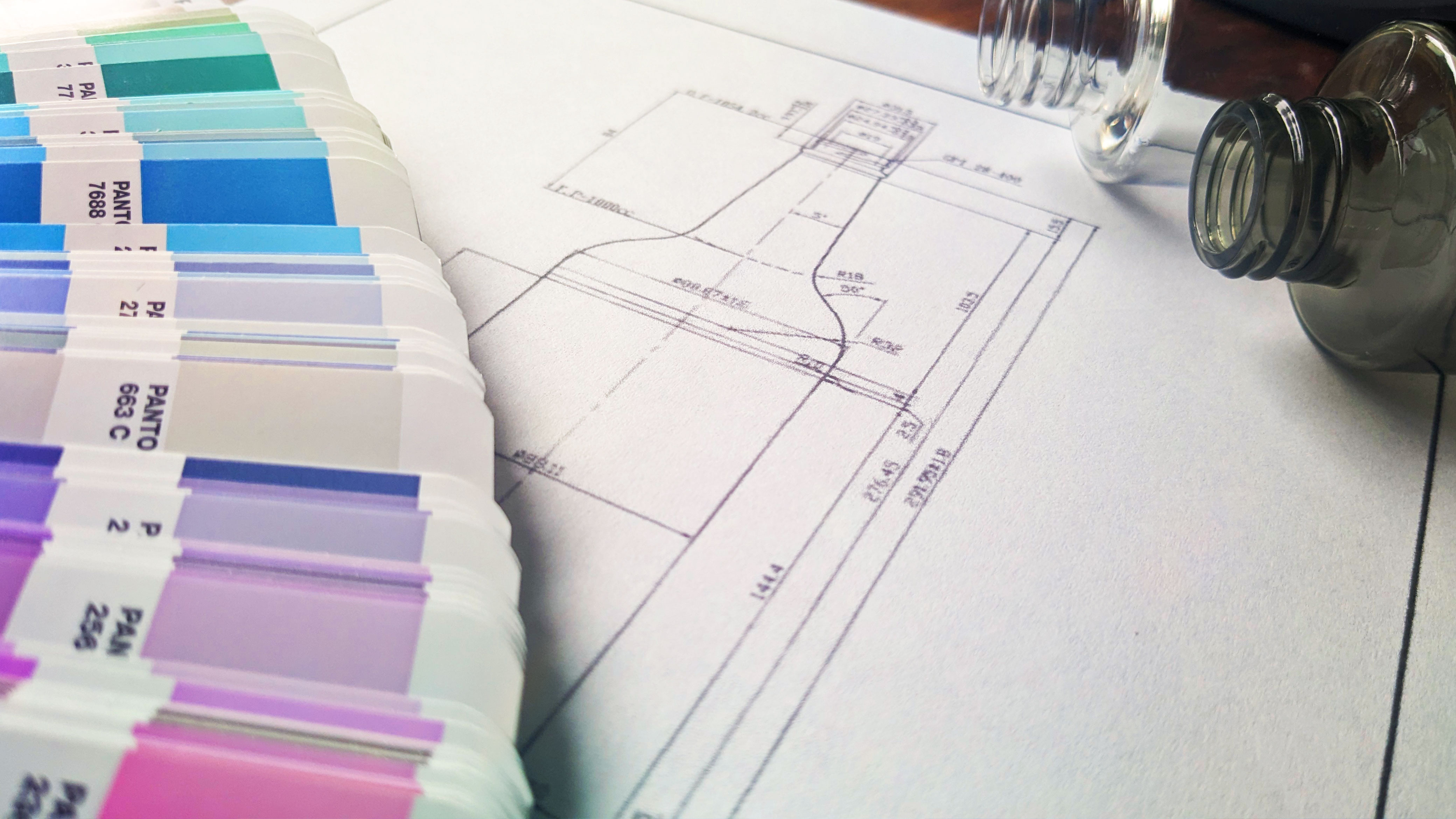
Considerations When Designing Your Packaging
Contrast
Contrast in packaging design refers to the use of differences in visual elements such as color, texture, shape, size, and graphics to create emphasis and draw attention to certain aspects of the packaging. The use of contrast can help draw the eye to important elements of the package, such as the product name or logo while making other design elements recede into the background.
Contrast can also be used to create a sense of order on the package. By varying the contrast of different elements, designers can help guide the viewer’s eye and create a logical flow of information. For example, the product name might be the most highly contrasting element on the package, followed by a description of the product, and then any additional details or legal information in a lower-contrast text.
Typographic
Typography is another important element in packaging design as it can greatly impact the way consumers perceive a product and a brand. Effective typography can communicate important information about the product, such as its name, ingredients, and usage instructions, in a clear and organized manner. It can also establish a consistent visual identity for a brand, making it easily recognizable and memorable. Moreover, typography can evoke different emotions and convey a brand’s personality, helping to differentiate it from competitors and connect with consumers on a deeper level. Overall, typography is a powerful tool in packaging design that can influence consumer behavior and drive sales.
Illustrations
Like typography, illustrations are another important element in packaging design because they can capture the attention of consumers and communicate a brand’s message or story. Eye-catching and visually appealing illustrations can create a sense of curiosity and intrigue, making consumers more likely to pick up and examine your product. Illustrations can also evoke emotions and feelings that connect consumers to a brand and its products. Using thoughtful illustrations in your packaging design can greatly influence a consumer’s perception and decision to purchase a product.
Patterning
In the same way that typography and illustrations add visual interest to your packaging design, patterning can also help create a unique and memorable visual identity for your brand. Patterns can be used to convey a variety of meanings and emotions, such as sophistication, playfulness, or energy, depending on the design and color scheme. Patterning can also help to differentiate your brand from its competitors and create a cohesive visual system across different product lines. Patterning can also be an effective way to add visual interest and texture to packaging, making it more appealing to consumers. When used effectively, patterning can help a brand to stand out on the shelves, create a lasting impression, and ultimately drive sales.
Shapes
The shape of your packaging is an important part of the design process as it will affect the functionality, convenience, and visual appeal of the package. The shape can impact how the product is displayed, stored, and used, as well as the overall aesthetic appeal of the product. The packaging shape can also contribute to the product’s received value and brand recognition.
Concept
Having a well-defined concept is an essential aspect of a good package design as it helps to convey the intended message of the product to the customer. The packaging concept should be based on a clear understanding of your target audience, the product’s benefits, and your overall brand image. Developing a thoughtful and cohesive packaging concept is a vital part of a successful product launch and long-term business strategy.
Sensation
Sensation refers to the way a package looks, feels, sounds, and smells. A well-designed package can create an emotional connection with the consumer and evoke positive feelings that stimulate interest in the product.
The colors, materials, textures, and shapes used in your packaging design can all impact the way a customer perceives the quality of your product. Also, keep in mind that a product that is easy to handle and open will also impact the overall customer experience and increase the likelihood of repeat purchases.
Protection
Protection is a very significant aspect of a successful packaging design. One of the main purposes of packaging is to make sure that the product gets to the consumer in good condition. Therefore, the packaging must provide protection against various external factors that could harm the product, such as extreme temperatures, impact, moisture, and light.
If the packaging fails to protect the product, it can result in damage or spoilage, leading to customer dissatisfaction and could potentially harm your brand’s reputation. Good packaging design should take into account the product’s unique characteristics and potential hazards during transportation and storage.
Materials
The materials used in your packaging are vitally important because they will affect the durability, sustainability, and overall performance of your packaging design. Choosing the right packaging materials can help protect your product, reduce waste, and improve the customer’s experience. The material you choose should be based on the unique characteristics of your product, your desired environmental impact, and accessibility to the material of your choice within the supply chain.

Make Your Brand Stand Out Against The Competition Today
Having great packaging design is an integral part of creating a successful product as it can greatly influence consumer perception and purchasing decisions. Great packaging design can make all the difference when it comes to attracting customers, so take your time and put in the effort to create something that really shines.
Paramount Global can be a partner to you in every step of your packaging journey. From offering our expertise and knowledge to create a custom packaging design that truly stands out on the shelf to managing the logistics of bringing your product to the market, we are here for you, every step of the way. Since 1976, Paramount Global has been proudly partnering with businesses across industries to bring their products to the market. We have built lasting partnerships with businesses like yours by delivering innovative solutions and personalized customer service, including packaging design services. Let us be a partner in your packaging design process and help you find the right packaging material for your products. Contact us today to learn more about our expertise and how we can help you create packaging that stands out on the shelf.
Hayley is a marketing professional and copywriter with a background in crafting content for a diverse range of industries. She has been writing about packaging and supply chain logistics for Paramount Global since 2022. She specializes in explaining complex topics in a clear and engaging way and is an advocate for sustainability in packaging and supply chain management.
Read More
For over forty years, Paramount has been delivering perfectly integrated packaging and supply chain solutions.
